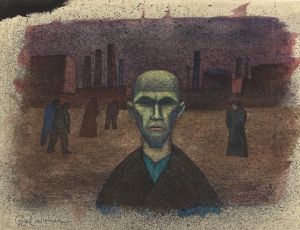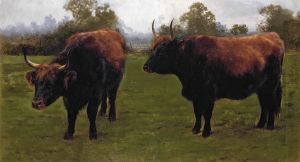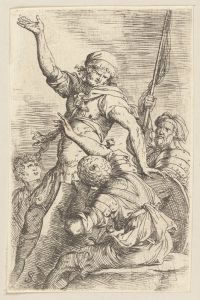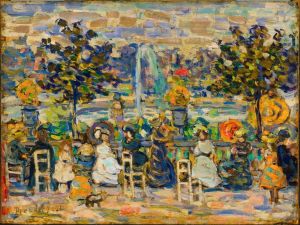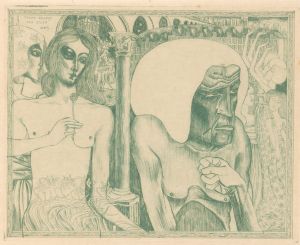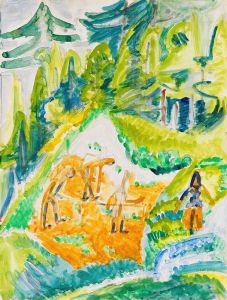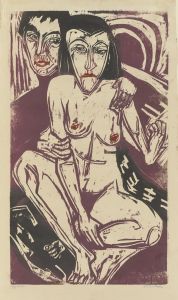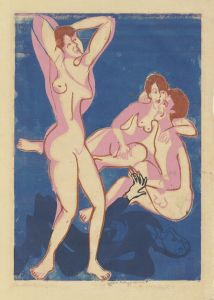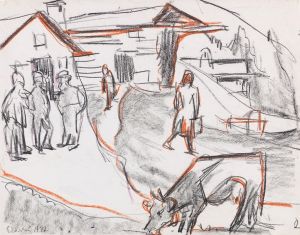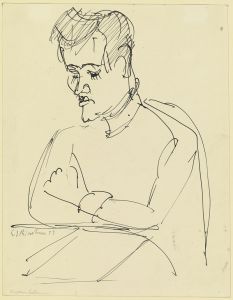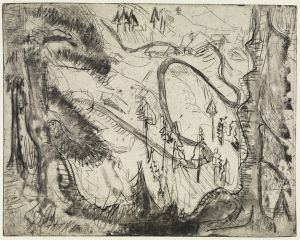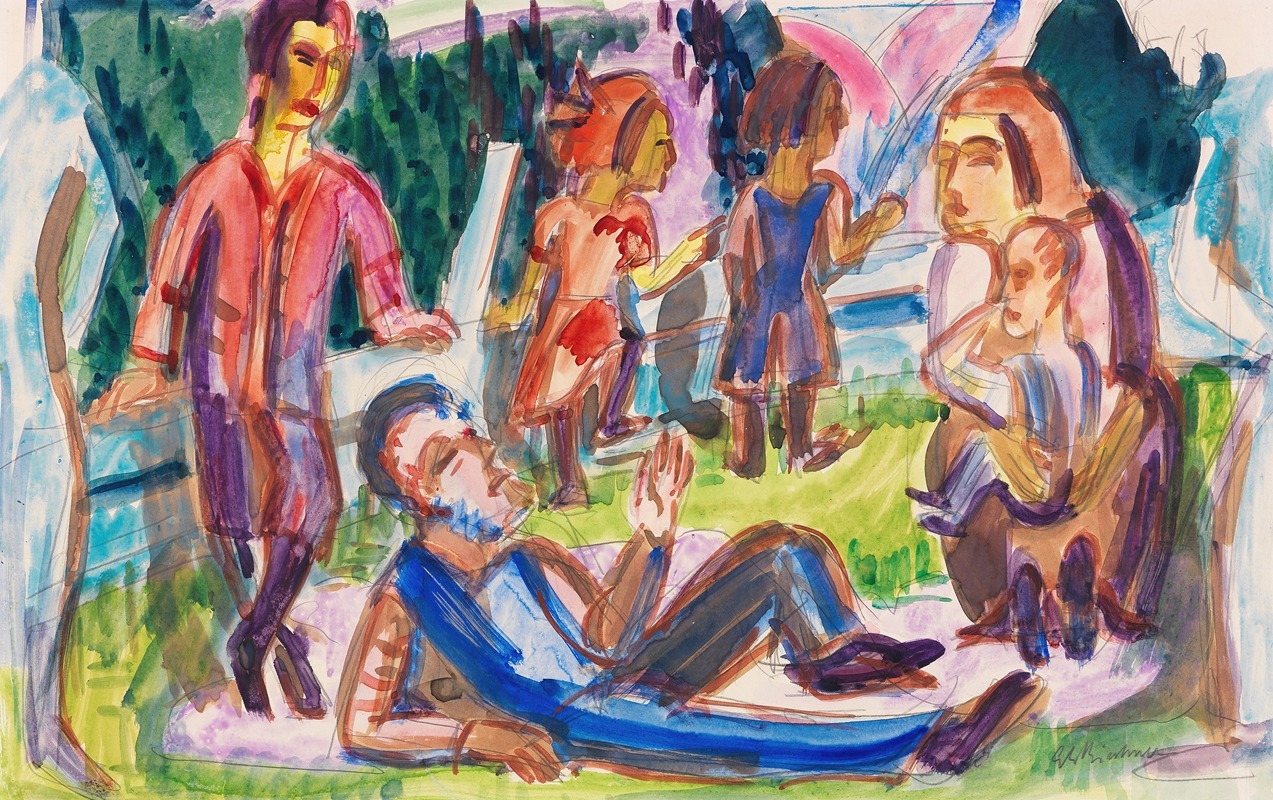
Familie auf der Wiese
A hand-painted replica of Ernst Ludwig Kirchner’s masterpiece Familie auf der Wiese, meticulously crafted by professional artists to capture the true essence of the original. Each piece is created with museum-quality canvas and rare mineral pigments, carefully painted by experienced artists with delicate brushstrokes and rich, layered colors to perfectly recreate the texture of the original artwork. Unlike machine-printed reproductions, this hand-painted version brings the painting to life, infused with the artist’s emotions and skill in every stroke. Whether for personal collection or home decoration, it instantly elevates the artistic atmosphere of any space.
Ernst Ludwig Kirchner's painting Familie auf der Wiese (translated as Family on the Meadow) is a work created by the German Expressionist artist, who was a founding member of the influential art movement Die Brücke (The Bridge). Kirchner, born in 1880 in Aschaffenburg, Germany, is renowned for his vivid use of color, dynamic compositions, and emotionally charged depictions of modern life and nature.
Familie auf der Wiese reflects Kirchner's interest in portraying human figures in harmony with nature, a recurring theme in his oeuvre. The painting depicts a family group situated outdoors, surrounded by a meadow. The figures are rendered in Kirchner's characteristic Expressionist style, with bold, simplified forms and vibrant, non-naturalistic colors. This approach emphasizes emotional resonance over realistic representation, aligning with the ideals of the Die Brücke movement, which sought to break away from academic traditions and explore more primal, instinctive forms of artistic expression.
The exact date of creation for Familie auf der Wiese is not definitively documented, but it is consistent with Kirchner's works from the early 20th century, a period during which he frequently explored themes of leisure, community, and the human connection to nature. This theme was particularly prominent in his works created during his time in Dresden and later in Berlin, where he sought to juxtapose the vitality of rural life with the alienation of urban existence.
Kirchner's art was deeply influenced by non-Western art forms, particularly African and Oceanic art, which he admired for their perceived authenticity and raw emotional power. These influences are evident in the stylized forms and expressive distortions present in Familie auf der Wiese. The painting also reflects Kirchner's interest in the interplay between humans and their environment, a theme that became increasingly significant in his work as he retreated to the Swiss Alps later in his life.
The painting's current location and ownership are not widely documented in public records, and it is unclear whether it resides in a museum collection or private hands. Kirchner's works, in general, have been widely exhibited and are held in major collections around the world, including the Kirchner Museum in Davos, Switzerland, which is dedicated to his legacy.
Ernst Ludwig Kirchner's career was tragically cut short when he died by suicide in 1938. Despite his struggles, his contributions to modern art remain highly influential, and works like Familie auf der Wiese continue to be celebrated for their innovative approach to color, form, and emotional expression.





